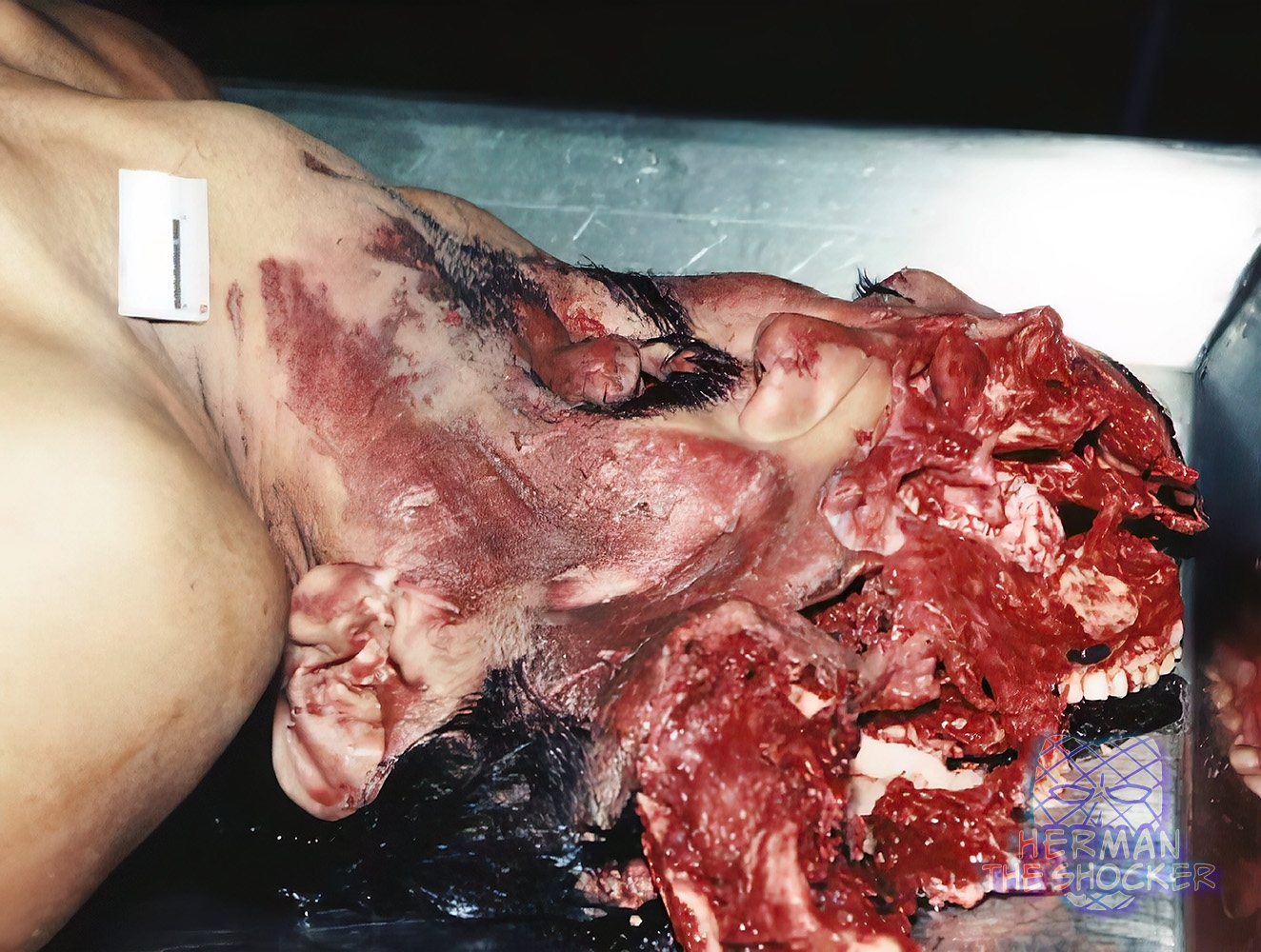This 33-year-old man was riding his bicycle on the interstate highway when he was struck by a tractor-trailer. Hi head was run over by one of the wheels of the truck or trailer. Impact of a pedestrian or bicyclist by a large vehicle often produces extensive comminuted fractures of the head, as in this instance. A more clear view of the nature of injuries can often be obtained if the head is stuffed with paper or cloth towels, then sewn back to reapproximate the edges of the lacerations.
Crushing head injuries usually do not allow direct visual identification of individuals, and above all, it constitutes an obstacle to comprehensive evaluation of discrete traumatic changes of the skin and soft tissues. In the medicolegal literature, reconstruction of devastating head injury is only occasionally mentioned as a method of choice. The reason is that this method is time-consuming and requires a certain degree of manual skill and anatomical knowledge.
The reconstruction method can also be recommended as an auxiliary and supporting technique in the identification of unknown persons with crushing head injuries. Careful reconstruction of the skull bones, including adaptation of the soft tissue wound edges, directly facilitates a primary visual identification, and/or an indirect visual identification of individuals when evidence is compared with the photographic documentation available. Moreover, the reconstruction may lead to determination of other minor identifications which were hidden or not estimable before the reconstruction itself (e.g., hairline, birthmarks, scars, tattoos, etc.).
Latest posts









